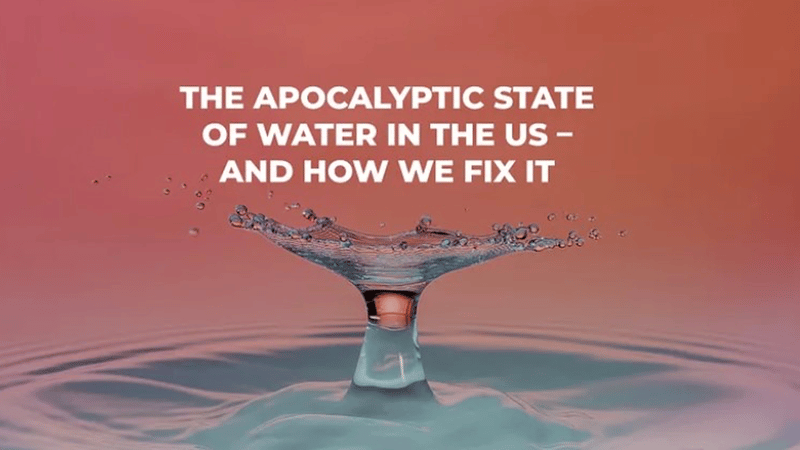
“Water bubbles up in streets, pooling in neighborhoods for weeks or months. Homes burn to the ground if firefighters can’t draw enough water from hydrants. Utility crews struggle to fix broken pipes while water flows through shut-off valves that don’t work.”
That was the opening line of recent article by AP News. It sounds almost apocalyptic — except it’s happening in 2024, right in the US city of Prichard, Alabama.
What’s causing this? Water infrastructure nestled unseen beneath the city is “corroding, cracking and failing” due to underfunding and neglect.
To add insult to injury, the article cites a 2023 state environmental report which revealed that the city has been losing over 60% of the drinking water it purchases from Mobile, Alabama.
Unfortunately, this story isn’t some outlier. We’ve been seeing more and more of these types of issues coming to light — especially in low-income areas. As the article notes, Jackson Mississippi, was losing some 65% percent of its water. The
EPA reports that we lose 2.1 trillion gallons of water annually from water main breaks alone.
While it’s terrible to see more issues like this cropping up, we’ve been sounding the alarm for years, and we’re glad more light is being shown on these problems. The article does a great job, even if grimly stated, of outlining the problems in the US.
“Communities buy or treat far more water than they otherwise would, passing costs to customers; water in oversized systems moves more slowly and can become stagnant, requiring lines to be flushed to prevent bacteria buildup, which wastes more water; and loss of pressure from pipe breaks can allow contamination to enter the system.”
With rapidly deteriorating central infrastructure and funding challenges in their way — the EPA cites $384 billion needed to improve drinking water infrastructure through 2030 — the article is more of a cry for help than a declaration of how to fix the problem, short of hopes for funding.
The article closes with a comment from a Michigan environment department member, reading, “Because you’ve underinvested in this system for decades and decades … it’s going to take decades to bring it back.”

And that is very true — when you’re reliant on centralized infrastructure, that is. The reality is that we aren’t going to be building giant centralized systems or millions and millions of miles of new piping anytime soon — and certainly not without major disruptions to daily life. Our infrastructure has been underfunded and poorly maintained for decades.
On top of that, the US recycles less than 1% of its wastewater, greatly exacerbating scarcity, which we see reflected in skyrocketing water rates that have residents, as the article cited, choosing between paying their water bills or buying food.
But what’s often overlooked is that the biggest draws on our centralized infrastructure actually aren’t residents — it’s industry and agriculture, who account for some 9/10ths of freshwater usage. Routinely, businesses are being told by cities that they can no longer take their wastewater. It’s simply too much for them to handle unless it meets strict standards.
When much of our infrastructure was built back in the ’50s and ’60s, the demands were very different. They didn’t predict the level of usage these businesses would require. On top of that, underfunding, deterioration, and lack of maintenance have only made things worse.
So, what then is the solution? Decentralization and the means to do it — both financially and technologically. If industry and agriculture treated their own water right at the point of pollution and then recycled that water, the situation here in America — and even across the world — could look very different. Cities would be freed from the massive burdens imposed upon them by such industries, and therefore better able to take care of their residents. They would face far less pollution to combat. Increased water recycling would increase availability and potentially reduce water rates. Like Ireland, perhaps water here in the US could one day be free for the people.
We’ve created the technology to do this — modularized, drop-in-place treatment systems — and the investor-funded financing that will allow access to this equipment paid for by the gallon is rapidly forming.
Water has been a notoriously stagnant industry for too long, and we’ve seen the consequences. Now, it’s time to fix them.
Hope to see you at my next live Thursday night briefing. Sign up here to attend.
Until next time…
Yours In Water,

Riggs Eckelberry
President & CEO
OriginClear, Inc.
PS: Questions? We’re happy to help! Just schedule a call here now: www.oc.gold/help. Or email us here.
%20250px.png?width=250&height=53&name=OriginClear%20Logo%202019%20(RGB)%20250px.png)



